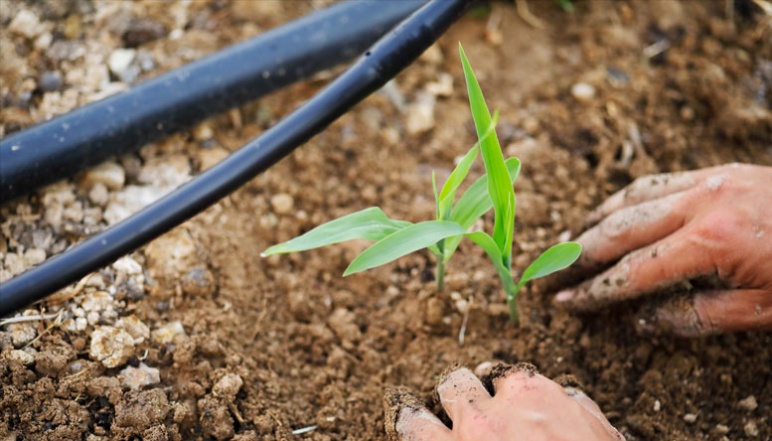Our Research Developing flexible estimates of agricultural supply functions for answering demand-side agricultural questions

Hands pressing the soil around a young plant
Principal Investigator
Dave Donaldson
- Professor
- Department of Economics
Dave Donaldson teaches and carries out research on international and intra-national trade with applications throughout sub-fields of economics. He has studied, among other topics: the welfare and other effects of market integration, the impact of improvements in transportation infrastructure, how trade might mediate the effects of climate change, and how trade affects food security and famine. This work was awarded the 2017 John Bates Clark Medal, given by the American Economic Association to the US-based economist “under the age of forty who is judged to have made the most significant contribution to economic thought and knowledge”. He currently serves as a co-editor at Econometrica and previously at American Economic Journal: Applied Economics, and as a program director (for trade) at the International Growth Centre.
Challenge:
How do farmers' planting decisions respond to crop prices? How, therefore, do we expect demand-side and policy changes to affect agricultural output and input use?
Research Strategy
- Leverage modern remote-sensing data on historical crop planting decisions
- Estimate revealed-preference model of agricultural supply decisions at micro-level
- Combine these components to make out-of-sample predictions about aggregate agricultural supply function
Project description
How will agricultural systems meet growing demand for crops from expanding world populations with increasing financial resources? How will the pressures of climate change on agricultural systems affect prices and supply chains? These and other questions affecting global food systems policy have a unifying theme: they all ask how a demand-side shock will affect production.
These questions each ask how a demand-side shock will affect production in a given location. Answers to these questions require an understanding of the “supply function” of an economy—i.e. how producers will respond to the price changes set in motion by changes in demand. The work in this project aims to apply knowledge from satellite data, statistics, and advanced models, to analyze key demand-side policies in agriculture supply chains, such as price support policies, tariff policies and proposals, and proposals in the ongoing discussion of a US-China trade agreement involving agriculture.
Outcomes
- Developed a statistical methodology for estimating farmers’ crop choice responsiveness to the prices they expect to receive for any crop they might grow
- Estimated the model on a dataset comprising four leading agricultural states (Indiana, Illinois, Iowa, and Ohio) and their four leading crops
- Found that supply responses are larger than have been found in prior work. These estimates can be used to answer questions about how crop outputs in the region would be expected to respond to changes in the economy such as a change in demand, taxes, tariffs, etc.
- Discovered that the relative demand for a pair of crops depends on the price of some third crop. For example, corn and soy appear to be close substitutes on many plots of land in a way that corn (or soy) and wheat are not. Such a pattern may reflect the “crop rotation” phenomenon in which corn and soy often rotate, in alternating years, on the same plot of land
Additional Details
Impact Areas
- Food
Research Themes
- Soil Fertility & Crop Productivity
- Economics, Policy, & Practices
- Modeling & Data Analytics
Year Funded
- 2020
Grant Type
- Seed Grant
Status
- Completed

